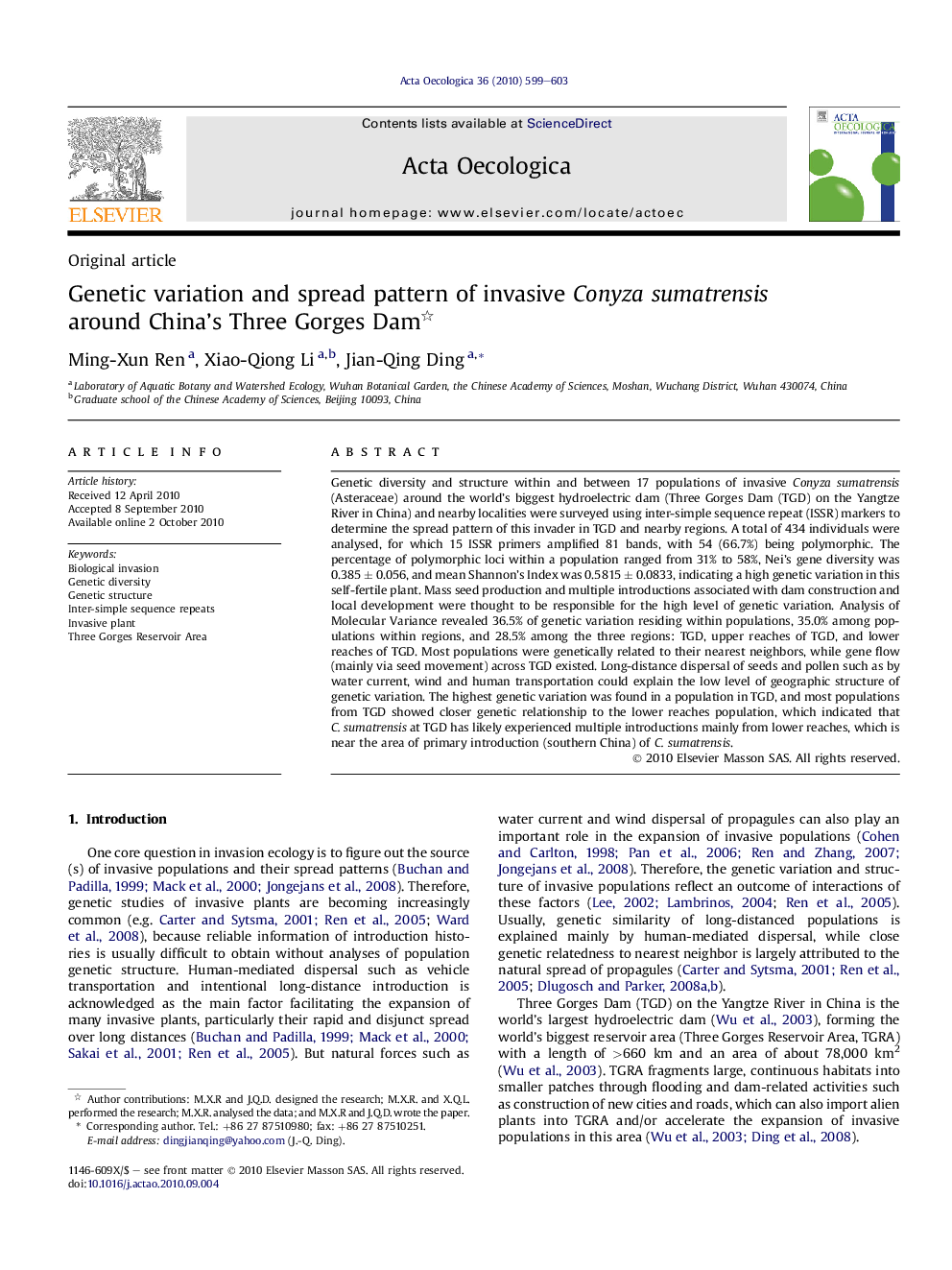| کد مقاله | کد نشریه | سال انتشار | مقاله انگلیسی | نسخه تمام متن |
|---|---|---|---|---|
| 4380963 | 1304042 | 2010 | 5 صفحه PDF | دانلود رایگان |

Genetic diversity and structure within and between 17 populations of invasive Conyza sumatrensis (Asteraceae) around the world’s biggest hydroelectric dam (Three Gorges Dam (TGD) on the Yangtze River in China) and nearby localities were surveyed using inter-simple sequence repeat (ISSR) markers to determine the spread pattern of this invader in TGD and nearby regions. A total of 434 individuals were analysed, for which 15 ISSR primers amplified 81 bands, with 54 (66.7%) being polymorphic. The percentage of polymorphic loci within a population ranged from 31% to 58%, Nei’s gene diversity was 0.385 ± 0.056, and mean Shannon’s Index was 0.5815 ± 0.0833, indicating a high genetic variation in this self-fertile plant. Mass seed production and multiple introductions associated with dam construction and local development were thought to be responsible for the high level of genetic variation. Analysis of Molecular Variance revealed 36.5% of genetic variation residing within populations, 35.0% among populations within regions, and 28.5% among the three regions: TGD, upper reaches of TGD, and lower reaches of TGD. Most populations were genetically related to their nearest neighbors, while gene flow (mainly via seed movement) across TGD existed. Long-distance dispersal of seeds and pollen such as by water current, wind and human transportation could explain the low level of geographic structure of genetic variation. The highest genetic variation was found in a population in TGD, and most populations from TGD showed closer genetic relationship to the lower reaches population, which indicated that C. sumatrensis at TGD has likely experienced multiple introductions mainly from lower reaches, which is near the area of primary introduction (southern China) of C. sumatrensis.
Journal: Acta Oecologica - Volume 36, Issue 6, November–December 2010, Pages 599–603